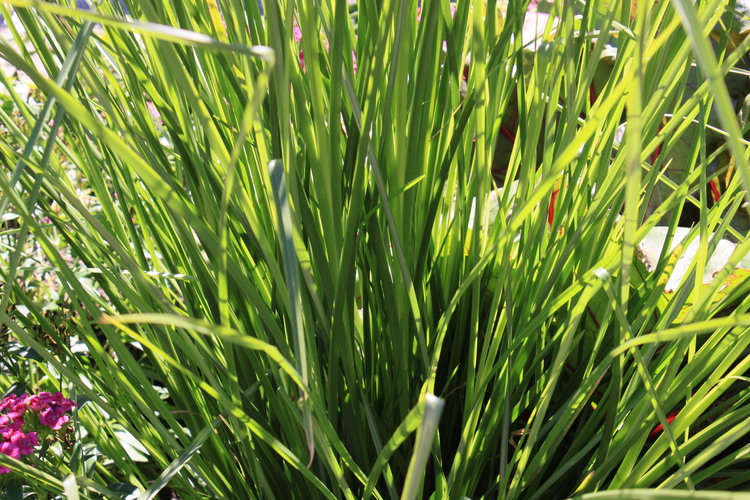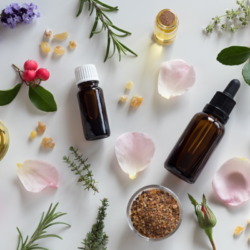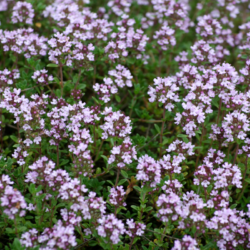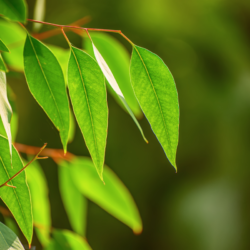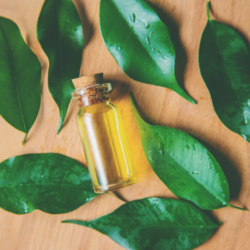Palmarosa has been distilled since the 18th century. It is native to India and is often called Indian geranium , because it contains geraniol , which in particular gives its essential oil a smell more or less close to that of Rosat geranium , or even rose. This plant has been used for a long time in Ayurvedic medicine . In the Caribbean, some people drink it as a beverage and otherwise apply it to the skin to treat lesions.
A little history
This essential oil has been distilled in India and Turkey since the 18th century. In India, it is considered an antibacterial agent against infections and fungi , and is used in massage for inflammations as well as pains of the nervous system . In Madagascar, this essential oil is indeed traditionally used to treat genital disorders and diarrhea , promote skin healing and regulate excessive sweating .
In China, palmarosa is especially prescribed as a yin food because of its power to quench the fire of the mind and body. Some use it, among other things, to flavor tobacco. Chinese medicine thus considers that the essential oil of palmarosa promotes cooling of the body. This makes it an effective drug for treating inflammation-related diseases .
What are the pharmacological properties of Palmarosa flowering whole plant essential oil ?
Antimicrobial effect:
Palmarosa essential oil is a major antibacterial and antiviral . Also antifungal on dermatophytes, its activity is superior to certain reference antifungals. A modification of the cell membrane of Saccharomyces cerevisiae yeasts is noted because geraniol modifies the composition of the cell membrane.
Palmarosa also reduces the multiple resistance of Enterobacter aerogenes , Escherichia coli , Pseudomonas aeruginosa and Acinetobacter baumannii , it thus significantly increases the effectiveness of beta-lactams, quinolones, and chloramphenicol by activity on the efflux pumps.
Active against strains of Candida resistant to fluconazole , palmarosa also inhibits the biofilms of Candida sp . Indeed, it potentiates the effects of amphotericin B and ketoconazole on Aspergillus sp .
Antispasmodic effect:
A smooth muscle antispasmodic , palmarosa essential oil is spasmolytic , presumably by blocking calcium channels, and additionally inhibits contractions of the ileum.
Antiparasitic effect:
Antiparasitic , palmarosa is therefore an insecticide and repellent against insects, in particular Aedes albopictus (tiger mosquito). It also protects against Anopheles vectors of malaria.
Other effects:
- Draining the ganglio-lymphatic system (intersticium) associated with the essential oil of aniba rosa
- Cardio circulatory draining
- Uterotonics in childbirth
- cardiotonic
- Neurotonic
- Healing
- Anti-inflammatory action by increasing IL-10 production, immunomodulating activity
- Estrogenic properties
- Astringent, moisturizing, healing as well as cell stimulating
- Analgesic
Does Palmarosa essential oil require any precautions for use?
- Contraindicated in pregnant (utero tonic) or breastfeeding women
- Contraindicated in children under 8 years old
- Caution with hormone-dependent diseases, due to mild estrogenic properties
- Risk of drug interactions, weak inhibition of CYP2B6, so ask your pharmacist for advice
- High dose epilepsy
- Potentially allergenic, it also increases the release of histamine
- Authorized in animals for external use
Medical bibliographic sources and clinical trials :
-
Delespaul Q, De Billerbeck VG, Roques CG, Michel G, Marquier-Vinuales C, Bessiere J-M. The Antifungal Activity of Essential Oils as Determined by Different Screening Methods. Journal of Essential Oil car Research, 2000
-
V. Tullio, A. Nostro, N. Mandras, P. Dugo, G. Banche, M.A. Cannatelli, A.M. Cuffini, V. Alonzo, N.A. Car lone. Antifungal activity of essential oils against filamentous fungi determined by broth microdilution and vapour car contact methods. Journal of Applied Microbiology 2007
-
Prasad CS, Shukla R, Kumar A, Dubey NK. In vitro and in vivo antifungal car activity of essential oils of Cymbopogon martini and Chenopodium ambrosioides and their synergism against dermatophytes. Mycoses. 2010
-
A. K. Singh, Anupam Dikshit, M. L. Sharma and S. N. Dixit. Fungitoxic activity of some essential oils. Economic car botany
-
C. L. Wilson, J. M. Solar car, A. El Ghaouth, M. E. Wisniewsk. Rapid Evaluation of Plant Extracts and Essential Oils for Antifungal Activity Against Botrytis cinerea. Plant car disease, 1997
-
Anjali Prashar, Pauline Hili, Robert G. Veness, Christine S. Evans. Antimicrobial action of palmarosa oil (Cymbopogon martinii) on car Saccharomyces cerevisiae. Phytochemistry
-
Khan MS, Malik A, Ahmad I. Anti-candidal car activity of essential oils alone and in combination with amphotericin B or fluconazole against multi-drug resistant isolates of Candida albicans. Med Mycol. 2012
-
Khan MS, Ahmad I. Antibiofilm activity car of certain phytocompounds and their synergy with fluconazole against Candida albicans biofilms. J Antimicrob Chemother. 2012
-
Ismail, H., & Kamara, J. (2012). Novel antifungal activity of geraniol and its synergistic effect in car combination with fluconazole against resistant Candida albicans. Worcester Polytechnic Institute
-
K. A. Hammer, C. F. Car son, T. V. Riley. Antimicrobial activity of essential oils and other plant extracts. Journal of Applied Microbiology, 1999
-
Pattnaik S, Subramanyam VR, Rath C.C. Effect of essential oils on the viability and car morphology of Escherichia coli (SP-11). Microbios, 1995
-
MURBACH TELES ANDRADE, Bruna Fernanda, NUNES BARBOSA, Lidiane, BÉRGAMO ALVES, Fernanda car Cristina, et al. The impact of Cymbopogon martinii essential oil on Cutibacterium (formerly car Propionibacterium) acnes strains and its interaction with keratinocytes. Journal of Pharmacy and Pharmacology
-
Asha M. Kumaran, Prashanth D’Souza, Amit Agarwal, Rama Mohan Bokkolla, Murali Balasubramaniam. Geraniol, the putative car anthelmintic principle of Cymbopogon martinii. Phytotherapy Research, 2003
-
Katiki LM, Chagas AC, Bizzo HR, Ferreira JF, Amarante AF. Anthelmintic activity car of Cymbopogon martinii, Cymbopogon schoenanthus and Mentha piperita essential oils evaluated in four different in vitro tests. Vet Parasitol. 2011
-
Murbach Teles Andrade BF, Conti BJ, Santiago KB, Fernandes Júnior A, Sforcin JM. Cymbopogon martinii essential oil and geraniol car noncytotoxic concentrations exerted immunomodulatory/anti-inflammatory effects in human monocytes. J Pharm Car Pharmacol. 2014

